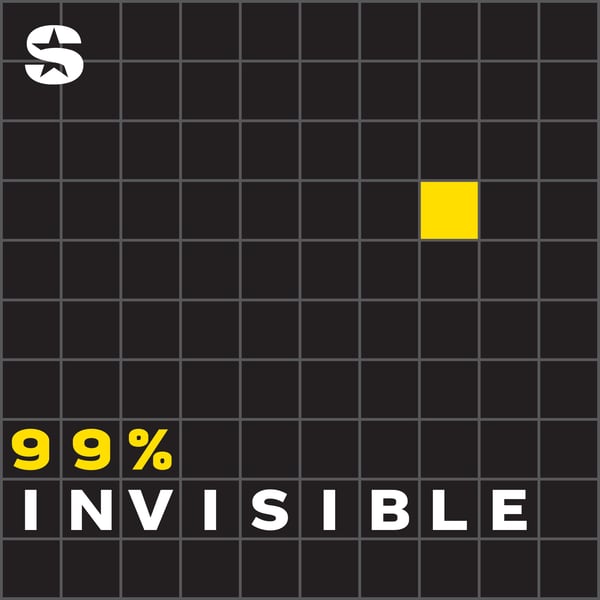Mini-Stories: Volume 10
99% Invisible
SiriusXM Podcasts and Roman Mars
4.8 • 27.5K Ratings
🗓️ 12 January 2021
⏱️ 40 minutes
🧾️ Download transcript
Summary
Transcript
Click on a timestamp to play from that location
| 0:00.0 | This is 99% invisible. I'm Roman Mars. |
| 0:06.0 | This is part two of the 2020-20-21 mini stories episodes where I interview the staff and our collaborators about their favorite little stories from the built world |
| 0:15.2 | that don't quite fill out an entire episode for whatever reason but they are cool 99 p. |
| 0:20.3 | stories nonetheless we have space pens, sea sheep, that'll make more sense here in a second, |
| 0:27.6 | circular design and a seasonal national forest populated by old Christmas trees. Stay with us. So I'm talking with Emmett Fitzgerald. What is the mini story you have for us? |
| 0:45.0 | All right, so I came across this story while I was reporting our Pete Boggs episode from a couple weeks back. |
| 0:52.0 | It's also a Scottish climate. Pete Bogg's episode from a couple weeks back. |
| 0:52.5 | It's also a Scottish climate change story |
| 0:56.0 | in a certain way. |
| 0:57.2 | Climate change stories, Scottish or otherwise, |
| 0:59.4 | is definitely your beat. |
| 1:00.8 | But we'll get, well actually, |
| 1:01.5 | we'll get to the climate change part in a little bit, but first I want to introduce you to Sean Tarrant. She is a woman who lives on a tiny island in Scotland called North Ronald's |
| 1:12.6 | which is the northernmost island on Orkney which is just north of Scotland. |
| 1:18.2 | It's a really small island it's about five miles along and one mile wide and at the moment it's got 62 residents. |
| 1:25.3 | Wow. Of which you are one. Yeah so I think when we arrived it was maybe mid-50s, so it's gone up a little bit since we arrived. |
| 1:36.0 | There's been two more families arrived since we moved here, which has been great. |
| 1:40.0 | The island actually had more people all the way back in the 1700s. The main industry at the time was seaweed. |
| 1:47.0 | It's really stormy up there and so there's kelp, like lots of kep just constantly washing up on the beaches. And the people on North |
| 1:55.2 | Ronalds would gather it up and it was used to make iodine or sometimes burned to make potash, which was a common industrial |
| 2:02.3 | chemical at the time. |
| 2:04.0 | So they had you know really booming industry in the 1700s and they had about 500 people living here at the time. |
... |
Please login to see the full transcript.
Disclaimer: The podcast and artwork embedded on this page are from SiriusXM Podcasts and Roman Mars, and are the property of its owner and not affiliated with or endorsed by Tapesearch.
Generated transcripts are the property of SiriusXM Podcasts and Roman Mars and are distributed freely under the Fair Use doctrine. Transcripts generated by Tapesearch are not guaranteed to be accurate.
Copyright © Tapesearch 2025.

